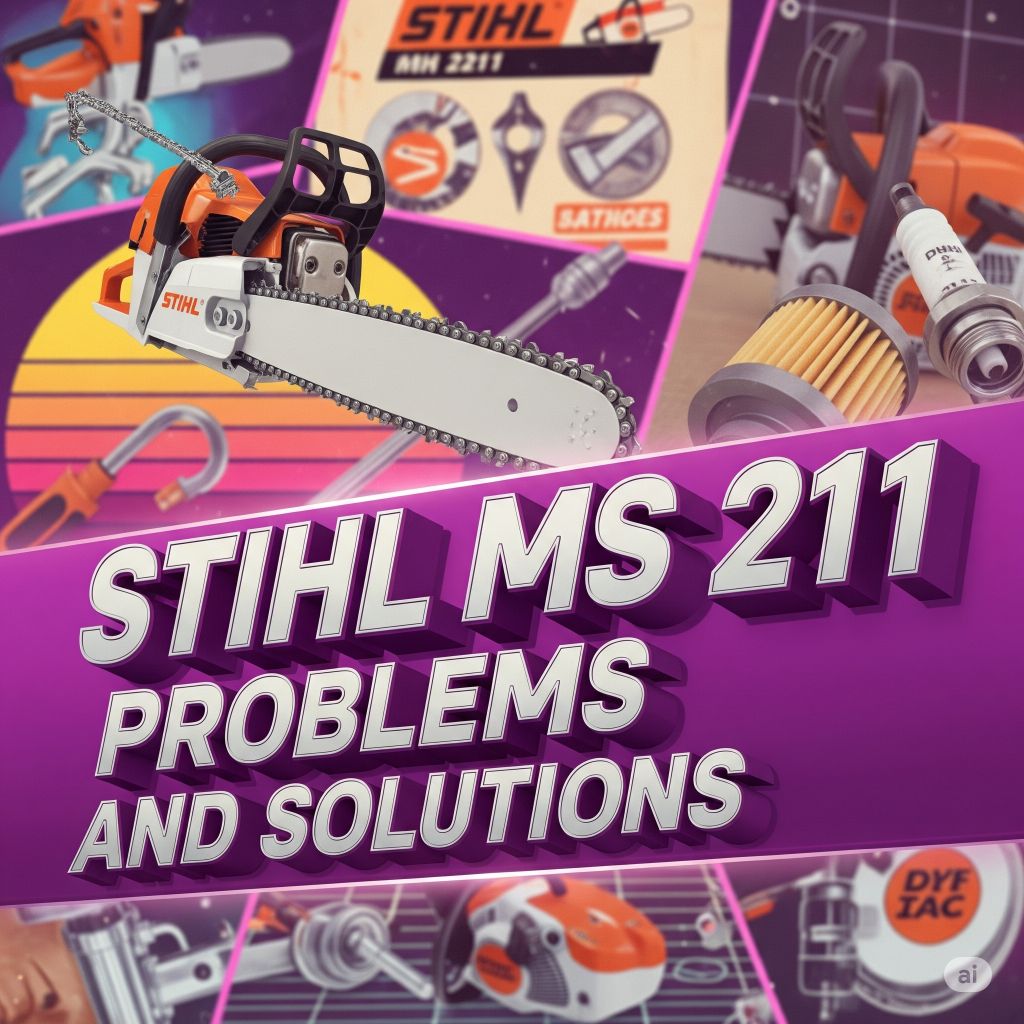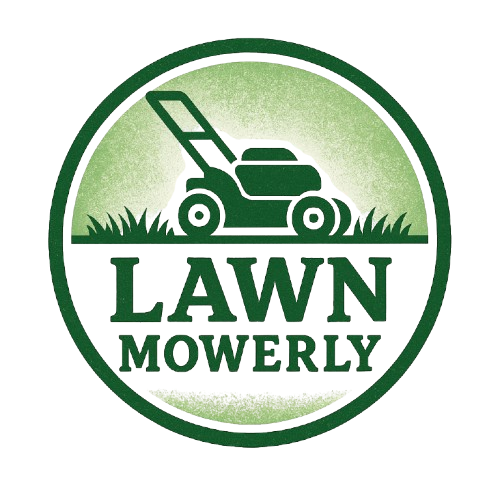
The Stihl MS 211 is a widely favored chainsaw for its balance of power, maneuverability, and reliability, making it suitable for felling small trees, limbing, and cutting firewood. However, like any piece of power equipment, it can experience issues. Understanding these common problems and their solutions can help you maintain your MS 211’s performance and extend its lifespan.
1. Starting Problems (Hard to Start or Won’t Start)
Symptoms:
- Engine cranks but doesn’t fire up.
- Takes many pulls to start.
- Doesn’t start at all.
Common Causes and Solutions:
- Stale Fuel / Incorrect Fuel Mix:
- Problem: Fuel left in the saw for extended periods can go stale (especially with ethanol), leading to gumming in the carburetor and fuel lines. An incorrect fuel/oil mix (too much oil, too little oil, or wrong type of oil) can also cause starting issues and engine damage.
- Solution: Drain old fuel completely. Refill with fresh, high-quality, ethanol-free gasoline mixed with Stihl HP Ultra 2-stroke engine oil at the correct 50:1 ratio. Use a fresh mix, preferably no older than 30-60 days.
- Clogged Fuel Filter:
- Problem: Dirt or debris in the fuel tank can clog the fuel filter, restricting fuel flow to the carburetor.
- Solution: Remove the fuel line from the carburetor and check for fuel flow. If flow is poor, replace the fuel filter (located inside the fuel tank, attached to the fuel line).
- Fouled or Worn Spark Plug:
- Problem: A dirty, carbon-fouled, or worn spark plug won’t produce a strong enough spark for ignition.
- Solution: Remove the spark plug. Inspect for carbon buildup, oil fouling, or damage. Clean with a wire brush or replace if necessary. Ensure the spark plug gap is correct (refer to your manual).
- Clogged Air Filter:
- Problem: A dirty air filter restricts airflow, leading to a rich fuel mixture and difficulty starting.
- Solution: Remove and clean the air filter. If it’s heavily soiled or damaged, replace it.
- Flooded Engine:
- Problem: Too many priming pumps or too many choke pulls can flood the engine with fuel.
- Solution: Remove the spark plug, turn the saw upside down, and pull the starter cord several times to clear excess fuel. Clean and dry the spark plug before reinstalling. If the saw has a “decompressor valve,” use it to aid starting after flooding.
- Carburetor Adjustment:
- Problem: Incorrect high (H) or low (L) speed mixture settings.
- Solution: This usually requires a specialized tool. If basic troubleshooting doesn’t work, take it to a Stihl dealer for proper carburetor tuning.
2. Loss of Power / Runs Rough / Stalls
Symptoms:
- Saw bogs down when cutting.
- Engine idles erratically or won’t hold an idle.
- Engine stalls under load or when throttle is released.
Common Causes and Solutions:
- Clogged Air Filter: (See starting problems above) Restricts air, causes rich mixture.
- Solution: Clean or replace the air filter.
- Clogged Fuel Filter: (See starting problems above) Restricts fuel flow.
- Solution: Replace the fuel filter.
- Dirty Carburetor:
- Problem: Gum or varnish deposits from old fuel can clog tiny passages in the carburetor, leading to poor fuel delivery.
- Solution: A carburetor cleaning (disassembly, cleaning with carburetor cleaner, and new gaskets/diaphragms if needed) might be required. In some cases, replacement is the easiest option.
- Clogged Spark Arrestor Screen:
- Problem: Carbon buildup in the muffler’s spark arrestor screen can restrict exhaust flow, leading to power loss and overheating.
- Solution: Remove the muffler and carefully clean the spark arrestor screen with a wire brush. Some screens are replaceable.
- Incorrect Carburetor Adjustment:
- Problem: If the saw runs lean (too little fuel), it can overheat and lose power. If it runs too rich, it will smoke and bog down.
- Solution: Have the carburetor tuned by a Stihl technician.
- Damaged Piston/Cylinder (Rare but Serious):
- Problem: Caused by running too lean, incorrect fuel mix, or overheating. Results in significant power loss, poor compression, and often a metallic rattling sound.
- Solution: Requires professional diagnosis and usually expensive engine repair or replacement. Prevent by using correct fuel mix and proper maintenance.
3. Chain/Bar Issues (Cutting Problems)
Symptoms:
- Chain not cutting straight.
- Saw pulling to one side.
- Chain not moving or spinning slowly.
- Excessive smoke from chain/bar.
Common Causes and Solutions:
- Dull Chain:
- Problem: The most common reason for poor cutting. A dull chain doesn’t cut; it scrapes.
- Solution: Sharpen the chain regularly using the correct file size and angle. Or, replace with a new, sharp chain.
- Incorrect Chain Tension:
- Problem: Chain too loose (can derail) or too tight (causes rapid wear, bar heating, and power loss).
- Solution: Adjust chain tension (should be snug but still allow you to pull it around the bar by hand). Refer to your manual for precise tensioning instructions.
- Worn Guide Bar:
- Problem: Grooves on the guide bar can widen or wear unevenly, causing the chain to wobble and cut crooked.
- Solution: Check the guide bar rails for wear. Flip the bar periodically for even wear. Replace worn bars. Ensure the oil hole is clear.
- Insufficient Bar Oil:
- Problem: Lack of lubrication causes excessive friction, heat, smoke, and rapid wear to the chain and bar.
- Solution: Ensure the bar oil tank is full of quality bar and chain oil. Check if the oil pump is working (hold tip of bar over light-colored surface, run saw – oil should fling off the tip). Clean the oil port on the bar.
4. Excessive Vibration
Symptoms:
- Abnormal shaking or vibration during operation.
Common Causes and Solutions:
- Loose Components:
- Problem: Loose screws on handles, covers, or engine mounts.
- Solution: Inspect and tighten all visible fasteners.
- Damaged Anti-Vibration Mounts:
- Problem: The rubber anti-vibration mounts (buffers) can wear out or become brittle.
- Solution: Inspect the rubber mounts. Replace any that are cracked, torn, or excessively soft/hard.
- Bent Guide Bar or Damaged Chain:
- Problem: A bent bar or damaged (e.g., stretched, missing cutter) chain can cause imbalance.
- Solution: Inspect the guide bar for straightness. Check the chain for damage and replace if necessary.
5. Oil Leaks (Bar Oil)
Symptoms:
- Puddle of oil under the saw when stored.
- Excessive oil residue on the casing.
Common Causes and Solutions:
- Normal “Seepage”:
- Problem: Some oil seepage from the bar and chain oil system is normal, especially after use, as residual oil drains.
- Solution: Always store the saw on a non-absorbent surface or on cardboard that can be disposed of. This is very common with Stihl saws.
- Loose Oil Cap:
- Problem: Oil can leak from a loose or cracked oil tank cap.
- Solution: Ensure the oil cap is tightened securely and not damaged.
- Damaged Oil Lines/Pump:
- Problem: Worn or cracked oil lines, or a failing oil pump seal.
- Solution: Inspect oil lines and pump for visible leaks. Requires professional service if the oil pump itself is leaking.
Preventive Maintenance Tips
- Use Fresh, Correct Fuel Mix: This is the #1 cause of most 2-stroke problems.
- Clean Air Filter Regularly: Especially important in dusty conditions.
- Sharpen Chain Often: A sharp chain works safer and more efficiently.
- Check Chain Tension: Before each use.
- Clean Guide Bar: Clear the groove and oil holes. Flip the bar regularly.
- Clean Spark Arrestor: Periodically, especially if the saw feels sluggish.
- Store Properly: Drain fuel if storing for more than 3 months. Clean the saw thoroughly before storage.
Stihl MS 211 Specifications
The Stihl MS 211 is designed as a mid-range occasional use to light-duty professional chainsaw, offering a good balance of power, weight, and features for various tasks like cutting firewood, felling small trees, and limbing.
| Specification | Details |
|---|---|
| Engine Type | 2-stroke, single-cylinder gasoline engine |
| Displacement | 35.2 cc (2.15 cu. in.) |
| Engine Power Output | 2.3 hp (1.7 kW) |
| Weight (powerhead only) | 10.1 lbs (4.6 kg) |
| Fuel Capacity | 16.9 fl. oz. (0.50 L) |
| Chain Oil Capacity | 7.4 fl. oz. (0.22 L) |
| Fuel Mix Ratio | 50:1 (Gasoline:Stihl 2-stroke engine oil) |
| Recommended Guide Bar Lengths | 14 to 16 inches (35 to 40 cm) |
| Chain Type | Picco Micro™ 3 (PM3) or Rapid Micro™ (RM) |
| Chain Pitch | 3/8″ P |
| Oil Pump | Automatic, adjustable (Ematic™ system) |
| Starting System | Standard pull start with ErgoStart (optional/model variant) |
| Air Filtration System | Pre-separation air filtration system |
| Anti-Vibration System | Yes |
| Side-Access Chain Tensioner | Yes |
| MSRP (approx.) | ~$350 – $400 (varies by dealer/accessories) |
Key Features Summary
- Engine: The 35.2 cc engine provides 2.3 horsepower, offering sufficient power for typical homeowner and small-scale professional jobs.
- Weight: At 10.1 lbs (powerhead only), it’s relatively lightweight and maneuverable, reducing operator fatigue.
- Anti-Vibration System: Stihl’s effective anti-vibration system significantly reduces vibration levels felt by the user, enhancing comfort during extended use.
- Pre-Separation Air Filtration: This system extends filter life by removing larger, heavier particles before they reach the main air filter, reducing maintenance intervals.
- Side-Access Chain Tensioner: Makes adjusting chain tension easier and safer.
- Ematic™ Lubrication System: Works with the Stihl Oilomatic® saw chain and Ematic™ guide bar to provide proper lubrication and reduce oil consumption by up to 50%.
Stihl MS 211 “Error Codes”
It’s important to clarify that the Stihl MS 211, like most standard consumer-grade chainsaws, does NOT have an electronic engine management system that generates digital error codes (like “P0101” or “E-05”). It is a purely mechanical and analog piece of equipment.
Therefore, there is no dashboard display or blinking light sequence to “read” error codes from.
Instead, “problems” or “errors” are indicated by:
- Symptoms: How the saw behaves (e.g., won’t start, runs rough, stalls, chain doesn’t move, smoke from muffler).
- Visual Cues: Leaks, physical damage, clogged filters, fouled spark plug.
- Auditory Cues: Unusual engine sounds, grinding noises.
How to “Troubleshoot” for “Errors” on a Stihl MS 211
Troubleshooting an MS 211 involves a systematic check of its mechanical systems based on the symptoms. This is akin to how you’d diagnose an issue with a simple lawnmower or older car.
| Symptom (The “Error Indicator”) | What It Tells You (Possible Problem Area) | What to Check / Fix |
|---|---|---|
| Won’t Start / Hard Start | Fuel, Ignition, Air, Flooding | Fresh fuel/mix, spark plug, air filter, fuel filter, choke/prime |
| Runs Rough / Stalls | Fuel, Air, Exhaust, Carburetor | Fuel/air filters, spark arrestor, fuel lines, carburetor adjustment |
| No Power / Bogs Down | Fuel, Air, Exhaust, Chain | Fuel/air filters, spark arrestor, dull chain, incorrect chain tension |
| Chain Not Moving | Chain Tension, Brake, Clutch, Oil | Chain brake disengaged, chain tension, clutch, bar oil system |
| Smoking from Bar/Chain | Lubrication, Dull Chain | Bar oil level, oil pump function, chain sharpness, chain tension |
| Excessive Engine Smoke | Fuel Mix, Engine Issue | Fuel mix ratio, carburetor, worn piston rings |
| Vibration | Loose Parts, Anti-Vibration, Imbalance | Tighten all fasteners, check anti-vibration mounts, inspect bar/chain |
In essence: You are the diagnostic system. Your observation of the chainsaw’s behavior and performance, combined with knowledge of common chainsaw issues and a logical troubleshooting process, allows you to identify and fix problems.
Conclusion
The Stihl MS 211 is a reliable and popular chainsaw, but like all mechanical equipment, it requires regular maintenance and attention to detail. Most common problems are related to fuel quality, air/fuel filtration, or basic chain/bar maintenance. By following these troubleshooting steps and adhering to a consistent maintenance schedule, you can ensure your MS 211 operates safely and efficiently for years to come. For persistent or complex issues, always consult an authorized Stihl dealer.

I’m David man behind Lawn Mowerly; I’ve been dealing with lawnmowers and Tractors with my father since I was a kid. I know every make and model and what each one is capable of and love helping people find the perfect equipment for their needs.
